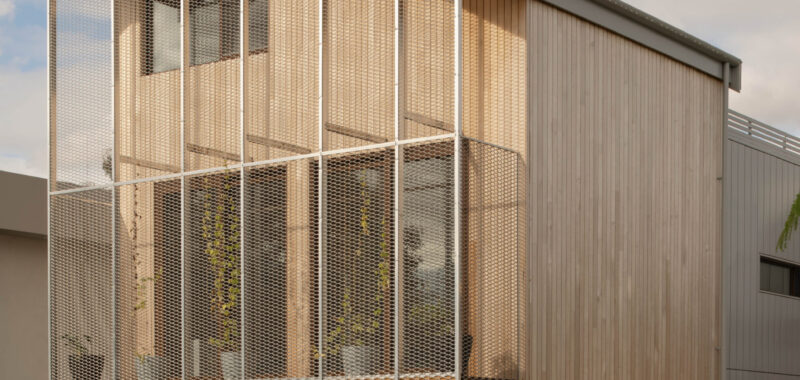After spending many years living in Japan, architect Siew Fung Then (associate and studio lead at Ewert Leaf) and Reto Hofmann (associate professor at Curtin University) wanted to bring a taste of Japan to their newly built family home in Perth.
They purchased a subdivided block in Nedlands with a vision to create a highly sustainable residence on a small footprint, built to the exacting standards of German Passivhaus certification. This meant it had to be energy efficient, comfortable all year round and meet the core Passivhaus’ principles of being well thermally insulated, airtight, and providing a healthy indoor air quality.
Being Siew Fung’s first time designing a Passive Home, she engaged a certified German Passivhaus builder, designer and certifier who helped her align her architectural vision with the strict criteria.
‘We knew what type of spaces we wanted – small, simple, warm and cosy. Besides, my partner did not get involved too much in the design… as long as he has a study with plenty of bookshelves, a room with a view for him to write, a functional fridge and a good oven for him to bake his sourdough bread, he is a happy camper.’
The three-level abode was prefabricated from cross-laminated-timber (CLT) — allowing for a ‘significantly’ shortened four-month construction — and features plenty of nods to Japanese architecture, from the Genkan entryway at the front of the house to the Engawa verandah on the façade.
‘While living in Japan, we always enjoyed the traditional Japanese architecture (both temples and farmhouses) with elevated veranda wrapping around the external walls, where one can sit at the veranda with feet touching the ground below,’ she says.
The facade incorporates a clever full-height screen that not only provides space for growing deciduous hobs on the second floor balcony, but shelters the house from the harsh sunlight in summer. A 5.8kW solar panel system also helps reduce the family’s energy consumption.
Inside, the beauty of using CLT meant there was also no need to cover the walls up with plasterboard. The material’s natural timber knots and imperfections make the family feel like they are living in a wood cabin, which turns into a concert hall whenever the couple’s daughters — Yza, 14, and Cya, 12 — play piano.
The living room opens up to a tatami, a traditional tearoom that accommodates ‘play, relax, work, and sleep’, beside the lush views of the internal courtyard.
‘I grew up in Kuching, in Malaysian Borneo, while my husband is from Switzerland,’ Siew Fung adds. ‘Both places are rich in dense forests and the courtyard reminds us of the green countryside we come from.’
‘Giant Timur Black bamboo will eventually envelope the rear fence and internal courtyard, affording privacy and a sheltered feel. When the wind blows, the sounds from these giant bamboo groves give a calm and soothing feel.’
And while many Australian homes seek to maximise internal space at the expense of outdoor areas, the couple made a conscious decision to keep the footprint compact, occupying about 35 per cent of the 431-square-metre block. Having lived in the house for more than a year now, they are confident they made the right choice prioritising land for their backyard, where Reto has planted an abundance of edible plants and fruit trees.
Siew Fung describes the completed Kingsway Residence as a blend of puzzle pieces from different countries — Germany, Japan, and Australia — that have been configured into a wonderfully cohesive whole.

